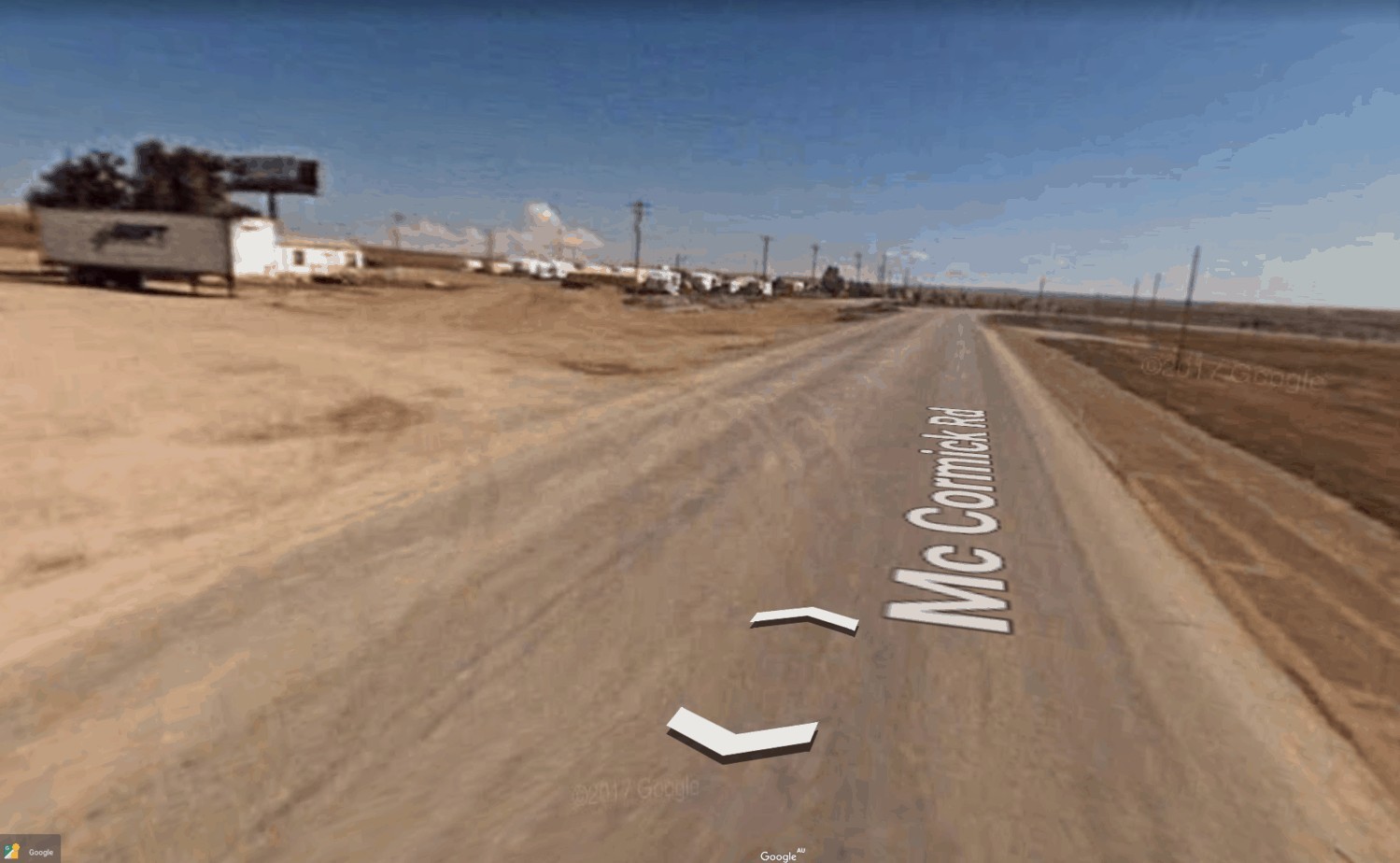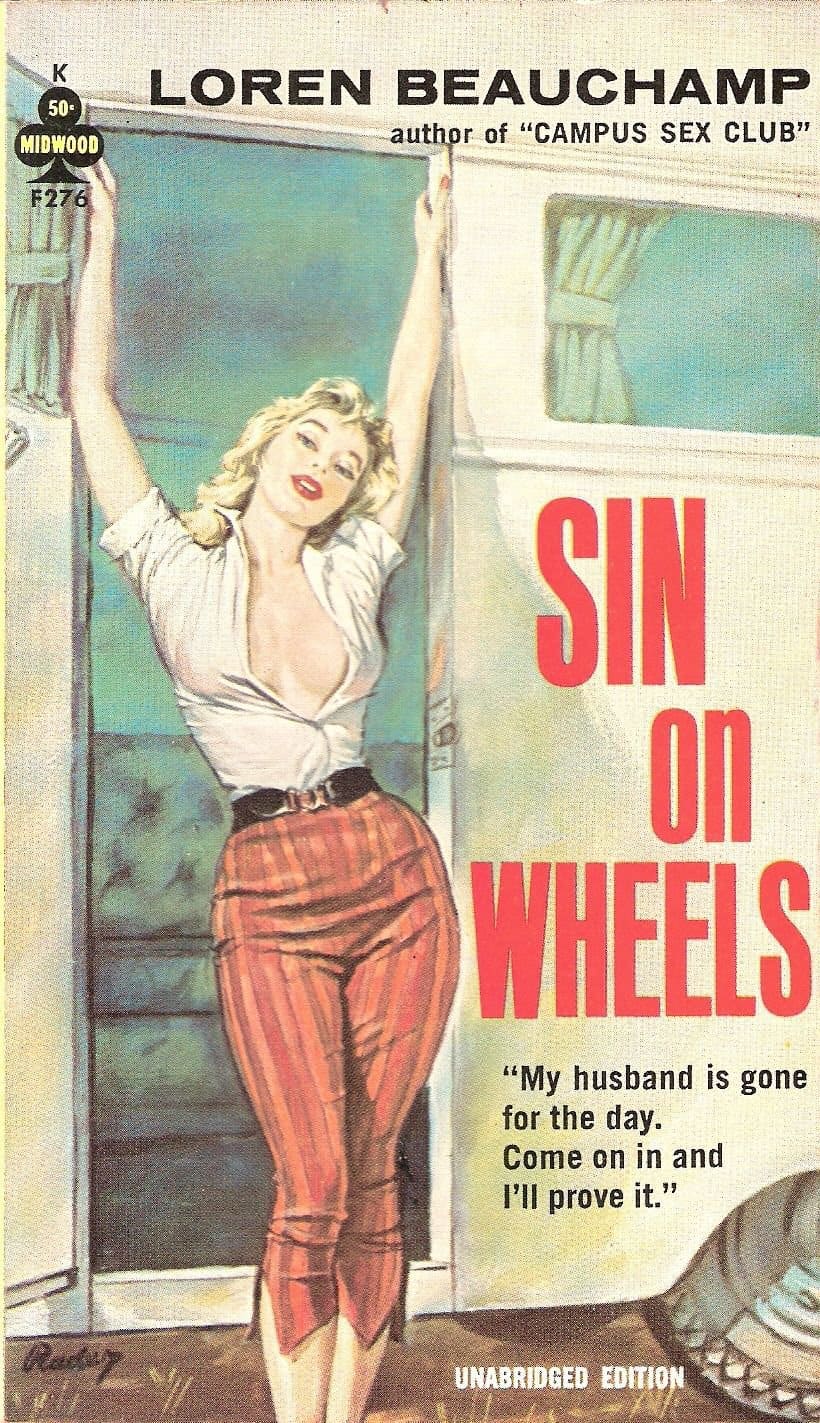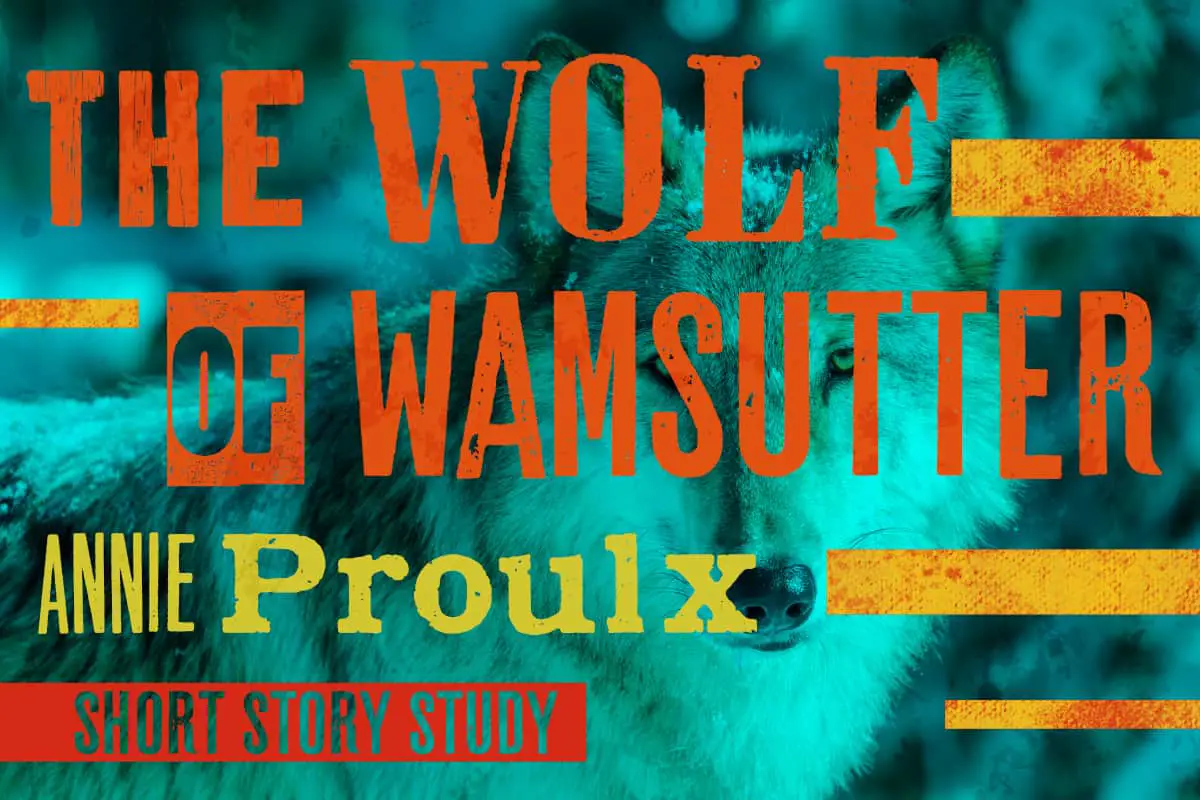“The Wamsutter Wolf” by Annie Proulx is a short story included in the Bad Dirt collection (2004). The title of the collection comes from this story.
SETTING OF “THE WAMSUTTER WOLF”
This particular setting can be geolocated.
Wamsutter is a town in Sweetwater County, Wyoming, United States. The population was 451 at the 2010 census.
Wikipedia
As of this moment, there’s no mention of Proulx’s short story on the Wikipedia page. I’d have thought someone’d include that, since Proulx is a well-known American writer and, as a result, tends to put places on the map.
An old highway and the newer Lincoln Highway divide the 1.5 square miles of red dirt town of Wamsutter into three portions. The Google car didn’t bother driving all the way in, but allows us a glimpse of the place from the periphery.

With its bright blue sky, low horizons and red earth vista, this little town could almost exist here in Australia, maybe somewhere near the SA, NT border. The idea that a wolf could live in Wamsutter is already ridiculous. Pan out a bit and you’ll find plenty of greenery nearby-ish.
However, something tells me this is not a story about wolves, per se…
WHAT HAPPENS IN “THE WAMSUTTER WOLF”?
Buddy, a man in his mid-twenties is having some bad luck. The jobs he’s taken since finishing school at sixteen all seem to end. While house-sitting for his parents back home, the place gets burgled. Buddy gets the blame from all sides. He decides to move to a tiny town called Wamsutter, and try his luck finding work there.
But the bad luck continues when he learns the trailer right next door belongs to the psychopathic bully from high school, Rase Wham. Rase has shacked up with Cheri from the same year, and now they have a pack of kids.
Also hanging round: A man who thinks of himself as a genuine mountain man from an earlier century, though it’s clear he makes far more use of modern conveniences than he’s prepared to admit to himself. Fake mountain men are an Annie Proulx special.
One night Rase breaks his son’s arm. Buddy comes home to find Cheri and her kids all in his trailer, messing it up, stinking it out. He drives them to the hospital and, that night, Cheri gets into bed with him and he has sex with her, nearer the non-consenting end of the rape continuum. He considers it rape.

He can see her plan is to get rid of Rase and turn Buddy into her new partner, so he hotfoots it out of there, and makes the decision to head on up to Alaska, about as far away as he can get from Rase. Buddy’s father knows what Rase is like and on the phone encourages Buddy to high tail it out of there without even stopping to gather his things.
But after Buddy arranges the job in Alaska, he does need to go back for his things. He runs into the family while he’s there. The young child whispers that the wolf got his father and that the mountain man friend is his new daddy now.
SYMBOLISM
Wolf symbolism is used in various different ways throughout the story. We know someone is Proulx’s designated wolf (baddie) but she saves that until the end.
POLITICAL ISSUES
Is “The Wamsutter Wolf” an example of ‘hixploitation‘? We are certainly encouraged to laugh at these people. I found myself laughing out loud then cringing at the next terrible turn point. I’m in no doubt that this is Proulx’s exact intention. People who literally live in trailers among trash make for easy comic targets. We tend to Other them. But their struggles are real.
Ultimately, this is a story of domestic violence, and one woman’s way of dealing with it. Our viewpoint character, Buddy Millar, manages to get out of that mess, just as the reader can shut the book. But Cheri has to find a way to go on living, and she proves herself more genuinely ‘mountain’ than her pretend mountain man saviour.
STORY STRUCTURE OF “THE WAMSUTTER WOLF”
Though “The Wamsutter Wolf” is a far more successful example, the plot and characterisation of “The Wamsutter Wolf” reminds me of “The Woman At The Store” by Katherine Mansfield.
- Both short stories star an unappealing woman who disgusts the viewpoint character by her unkempt appearance and rabid sex drive. The reader is invited to share in the viewpoint narrator’s disgust of her.
- In both cases she’s wound up with kids she didn’t plan for (or against).
- Each story ends with a revelation, from the naïve but knowing offspring, that the uncouth woman (perhaps unaided, perhaps not) has gotten rid of her abusive husband by killing him.
SHORTCOMING
The concept of ‘main character’ is problematic in “The Wamsutter Wolf” because we have a viewpoint character and the story of his life, but we also get, through his point of view, the story of Cheri. This is a story-within-a-story.
Buddy has decided to work straight out of school rather than go to college, so he’s at the mercy of temporary work which keeps drying up.
Our sympathy is firmly with him. We learn that while house-sitting for his parents, the house gets broken into. Buddy goes out of his way to recover what items he can, but still gets the blame, despite the fact this could’ve happened while his parents were at home themselves. I had a lucky escape myself at the same age, when I couldn’t get out of housesitting for my boss while she went off on a lengthy trip to Europe. Her place was broken into soon after my house-sitting duties ended. I counted myself lucky it didn’t happen on my watch.
Buddy has a dislike for intellectualism. He sees any sort of knowledge as fake and annoying, which is why he dislikes his cousin Zane, whose speciality is wolves. Yet he could leverage Zane’s connections and get a decent job if he didn’t feel so negatively. By the end of the story Buddy will learn to make use of his connections.
He will also learn to appreciate his father, despite them being at loggerheads a lot of the time.
DESIRE
Buddy Millar wants steady work but he also likes to take the bad dirt roads no one else uses. These two desires don’t mesh well together, since there doesn’t tend to be much work in remote areas.
However, if these desires are going to mesh anywhere, they’ll mesh in Alaska, which is where Buddy is headed by the end of the story.
When he gets drawn into the neighbours’ business he has a strong desire to extricate himself immediately.
OPPONENT
The romantic opponent, if you will, is Cheri Wham, who had the hots for Buddy in high school and decides he’s her next baby daddy after Rase proves himself an irreconcilable abuser.
Proulx draws the comparison between Cheri Wham and the pack rats who have moved into the abandoned trailer Buddy finds. The imagery is extended with Proulx depicting Cheri a fat woman, since pack rats are larger than your ordinary rats.
Most of this applies to Cheri as well as to packrats:
Each species of pack rat is generally restricted to a given type of habitat within its range. Pack rats live anywhere from low, hot, dry deserts to cold, rocky slopes above timberline. Pack rats build complex houses or dens made of twigs, cactus joints, and other materials. These contain several nest chambers, food caches, and debris piles. Dens are often built in small caves or rocky crevices, but when close by human habitations, woodrats will opportunistically move into the attics and walls of houses.
Wikipedia
PLAN
Buddy is a passive character for much of the story, going along with whatever else is happening. He doesn’t want to go into the rathole of a trailer for a grimy coffee, but he does. He doesn’t want to have sex with a woman he finds contemptible, but he does. We put up with these foibles from him because he sometimes does the right thing — he takes the boy to hospital when no one else will.
Eventually he is kicked out of his passivity when he begins to fear from his life. When he makes plans to move to Alaska, that’s when we know Buddy won’t be swept passively into anyone else’s dramas so easily from now on.
BIG STRUGGLE
The battle scene is the one where Buddy thinks Rase might come over to his trailer and kill him. It feels like a scene straight out of No Country For Old Men, with a man sitting behind a door, gun to the ready. But the scene is ultimately anti-climactic.
Proulx could have made a conflict-filled meal out of the phone call between Buddy and his father, in which Buddy tells part of a story and leaves out the more incriminating part (the fact he had sex with Cheri). Writers often default to this under the belief that more conflict is always good, and that characters should never be totally honest with each other. But Buddy is completely honest with his father, which actually feels like a bit of a subversion of what we were expecting. Proulx does cut the conversation in two—the first half happens with the mother, then Buddy has to wait a full day before learning if his dad will help him out. During this time, Buddy’s big struggle is with himself.
ANAGNORISIS
The big plot revelation (which I should’ve seen coming, having recently read Mansfield’s identical plot) is that Graig or Cheri or both have killed Rase Wham.
All through the story I wondered who Proulx was going to designate as ‘the’ wolf (of Wamsutter). This is revealed to us in the final sentence. The wolf is Graig the wannabe mountain man, who has his own pack now.
Buddy’s Anagnorisis is that his father ultimately has his back no matter how tough he acts. He thought his father was tough, but now he’s really been up close and personal with tough. His attitude towards his own cousin therefore takes a turn — he is able to rely on family connections to find work, so with a renewed appreciation for family, he relies upon his annoyingly know-it-all cousin to find him something.
Perhaps he’s partly learned from Cheri to make the most of your connections.
NEW SITUATION
With Cheri’s life pattern now established we extrapolate that she’ll remain with Graig for as long as he treats her well, then, if all goes well, once he starts abusing her she’ll quickly find a new man to be her protector.
Meantime, our viewpoint character Buddy Millar (our Buddy, not Cheri’s) will move on to a new job. We’re left with the feeling that this time his work will be protected and that his life is looking up from here on in.
Like consent itself, happy endings fall on a continuum.

